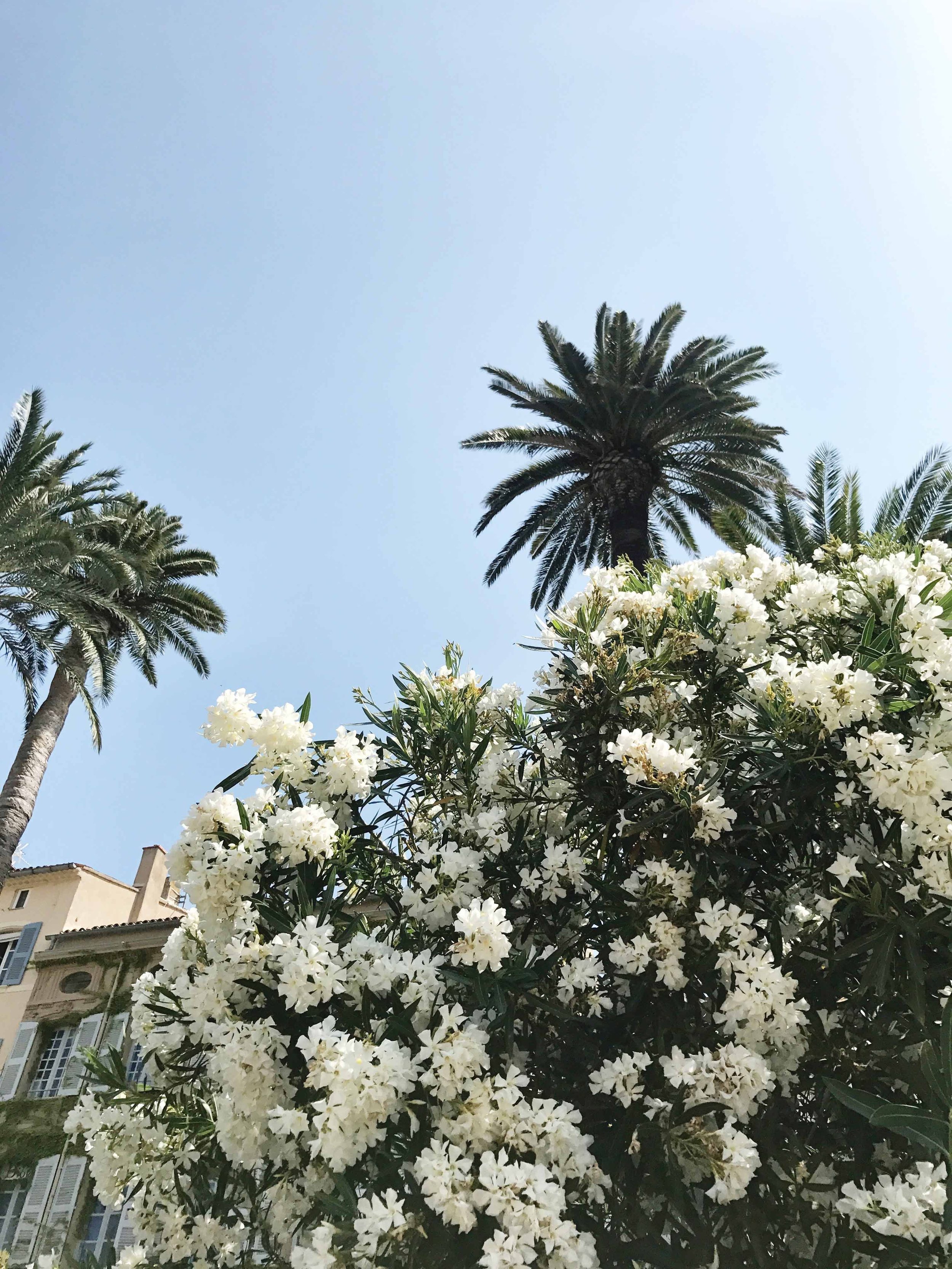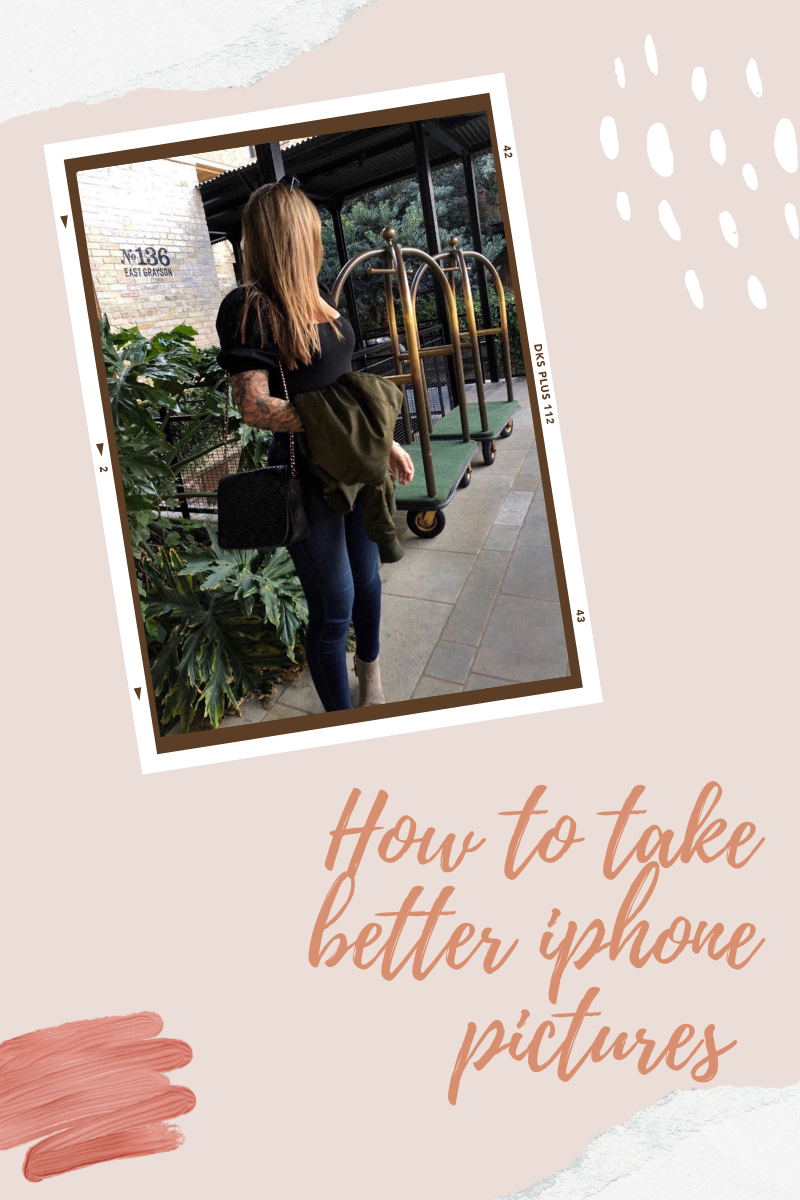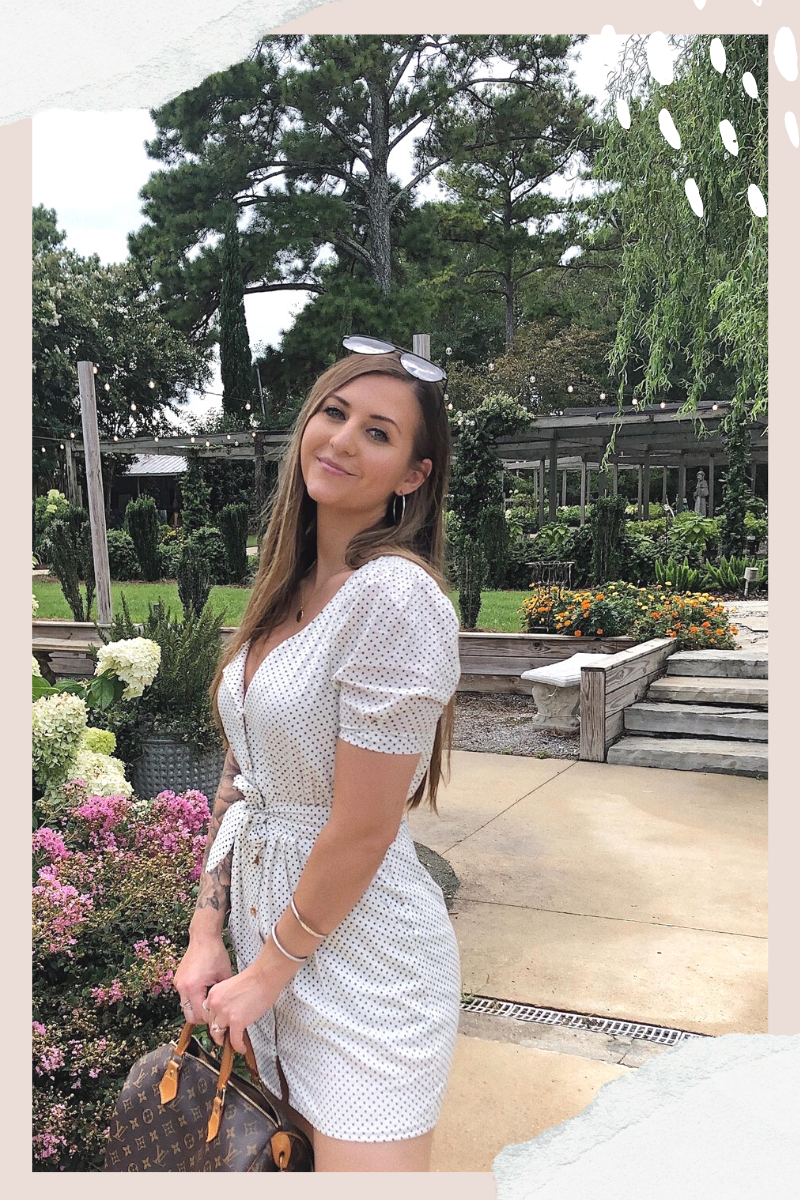How Influencers and Bloggers Earn Money
As you guys know, I recently transitioned from a successful military career to being a full time blogger/ “influencer” and I’ve been receiving a lot of messages asking how I switched over, how to become an influencer, how to grow on social media, etc. So I figured I would start a little series on the blog covering these topics, starting with how to monetize your social media. Unfortunately, there isn’t too much information out there on exactly how to go about it, so everything listed is my personal experience of how I’ve monetized my social media thus far in my blogging career and I’ll continue to update you guys as I learn more.
Now when it comes to working in social media, there are two common terms used: influencer and content creator. What’s the difference? A content creator creates high quality photos and videos for brands. To be honest, it doesn’t really matter how many followers you have as long as the photos you produce are creative, unique, and most importantly high quality (think professional photographs). Brands will hire you to shoot content for them and then you basically sell them the images you took for them to use for their own marketing. It is the equivalent of being hired to go do a photoshoot as a freelance photographer. They’ll send you the product and give you an outline of their goal and expectations, you provide the model, location scouting, photographer, editing, etc.
On the other side, there is the “influencer”. To be hired as an influencer, you typically need to have a good size following (there are also micro-influencers though, which we’ll discuss later) and brands are primarily hiring you for advertisement, as they know X amount of people are going to log onto Instagram/Youtube/TikTok and see your post with their product, and thus it might influence them to purchase or at least raise awareness for their product. I currently fall under the influencer term as most of my photos are simply taken with my iPhone capturing my style and adventures. I’m able to monetize my Instagram, Youtube, and blog, with Instagram currently being my main bread winner.
A good example is that an influencer’s page is like an online magazine. Normally, a company would spend X amount of dollars in marketing to create an ad for a magazine, TV commercial, etc where they would have to pay to create their content, and then pay for the ad space and hopefully people would pay attention as they’re flipping through their magazine. With influencer marketing, they’re able to find people who have followings that fit their target audience, check their engagement to make sure their audience actually pays attention to the posts made, and then spend that marketing budget here instead so that they know their advertisement will be seen.
I’ll discuss it more in a future post when I talk about how I became an “influencer”, but it’s important to remember to be patient, as success doesn’t come overnight. I’ve been growing my social media for 5 years now and I’m still considered to be on the smaller level of bloggers with 170K followers. When you’re first starting out, you’re not going to earn any money, which is why this usually starts as a side job for a few years for 99% of bloggers. At most, a brand will send you something for free and ask for you to post it on your page. However it’s important to do a good job with those free jobs in the beginning as it basically becomes your portfolio and helps to get your foot in the door when working with brands and PR groups.
SOURCES OF REVENUE
-Brand Partnerships / Sponsorships
For me personally, this is my main source of income. This can either be a long term contract (yearly contract), short term / campaign (usually a few months), or it can be a one time sponsored post. Although money can be tight when you’re starting out, I strongly suggest that you be picky about who you work with rather than taking every offer that comes your way. I’ve seen so many people take random partnerships (esp in the fitness industry) just so they can say they’re “sponsored”. The issues there are, 1. You don’t even like the products, so why are you excited for free stuff you don’t like or use? 2. You’re going to lose the trust of your following. If you post that something is really great and I order it and it’s trash, I’m probably not going to trust your recommendations anymore.
When I discuss working with a brand, I only consider brands that I personally shop at already, or who have high quality products and allow me to try the product first before entering into an agreement. I also prefer to start with shorter campaigns (3 months) to ensure I like working with a brand before I commit to long term contracts. Different brands have different styles; I prefer to work with brands who give me freedom in creating and posting my content. Most of my long term partners trust me to create tasteful content and post X amount of times a month, so they don’t micromanage anything I do. However, a lot of brands typically require you to send your content (pictures, IG stories, etc) to them for approval first and then post on specific days, especially in short term partnerships when they don’t know you as well.
There are also a few ways these partnerships can happen. Brands will either email me, or I’ll reach out to brands I like via email and send them my media kit (basically a portfolio) to discuss working together. Some brands will hire PR agencies to handle their partnerships, which can also be beneficial as you can get access to other brands that the agency handles. This is also how you can get invited to blogger events. When I was in San Antonio, I eventually got on the different PR agencies radars, so when there was a restaurant opening, an event happening, etc I would get invitations to attend. If this is something you’re interested in, it’s helpful to use local hashtags on IG such as #sanantonioblogger etc. Unfortunately, most PR events are during the weekdays, so I wasn’t able to attend too many there thanks to my job as a platoon sergeant lol.
Another way to connect with brands is to use influencer platforms. This is actually extremely new to me as I had no idea these existed until 3 months ago. You basically connect your social media and create a portfolio, the platform confirms you have an authentic following and didn’t buy followers, and then brands that use that platform can reach out to you or you can apply to different “job listings” that brands post. This hasn’t been the most fruitful method for me so far, however, I’ve only been on them for 3 months and it’s in the middle of a pandemic, so maybe when things calm down a bit there may be more job postings. However, so far I’ve had a few paid partnerships with some beauty brands and a meal kit service through these platforms. The few that I know of are: Fohr, AspireIQ, Activate, BrandBacker, and PopularPays. There are also a ton of gifting campaigns on these platforms for smaller bloggers that are looking to start out with some companies.
After connecting with a brand through one of the above ways, you’ll negotiate your rate. It is nearly impossible to find anything online saying how to set your rate. There’s a few random sites that give a generic formula of $10 per 1000 followers on Instagram, $50 to $100 per 1000 views on Youtube, and $60 per 1000 readers on a blog, but that’s simply not the case. Not to mention there are A LOT of factors that will play into the rate, such as your engagement levels; brands want to see that your content is well received by your following and will look at how many likes and comments you’re receiving, the type of comments, etc. Your demographics play a role as well, you might have 100K followers, but if the product is targeted at women, and only half of your followers are women, you’re only going to be paid for 50K followers.
I currently have two long term partnerships which is steady income I know is coming in, the remaining income/jobs is freelance that has to be secured each month with different brands. So some months you can earn a lot, while other months might be much less. With that being said, don’t forget that about 90% of your content is not sponsored. So you still have to treat your social media like a job and produce content every day even when that specific post isn’t earning you money.
-Affiliate Links
Another source of income for bloggers and influencers is affiliate links, which provide an influencer with commission when people purchase through their links. A major platform for this is RewardStyle which owns the shopping app LiketoKnowIt. It’s basically as if the influencer is a personal shopper, they spend the time looking online for cute clothes, shoes, decor, etc and the consumer is able to look at their page and just click direct links to each item to purchase. I will say that it’s very difficult to earn a significant amount through affiliate links unless you have a very large following of people who continuously shop. Additionally, with most affiliate programs, you do not receive free product. It’s usually things you have purchased or already own. Some brands you collaborate with might also be on RewardsStyle though, which would still give you the option to earn commission when you post those outfits on your LTKit app.
For each product you post, you usually only receive between 5-15% in commission and only receive that if the person actually uses your link (or code) to purchase. So someone might go out and buy a dress because they saw it on my page and liked it, but unless they go to my LTKit page or blog to make their purchase I obviously don’t receive anything from the sale. I typically try to post all of my outfits on LTKit and use affiliate links in my blog posts for small residual income. I also usually request commission on top of my monthly payment in all long term partnerships, so anytime someone uses my codes I receive commission as well.
-Gifting / Product for Post
This isn’t really income, as you can’t use it to pay your bills. However, it is a very big part in the blogging/influencer world so I felt I would discuss it as well. When you’re first starting out, this will likely be your only “income” as an influencer. Usually in the very beginning, you’ll just receive a discount on stuff to post about it. You see a lot of businesses (especially in the fitness industry) use this approach with micro-influencers (usually less than 1,000 to 10,000 followers). After about 10,000 followers you can start to receive some “free” product in exchange for a post; I dislike using the word free as it really isn’t, you’re expected to make some type of a post about that item, experience, etc. And then usually somewhere between 50K to 100K you can start to get some paid partnerships, with much more offers coming after 100K.
I typically do not accept any gifting campaigns at this point, as I’ve transitioned into this being my full time job and need to earn money to pay my bills. However, there are a few exceptions. I don’t usually charge small businesses, but I’ll only promote ones I really really love, like my favorite cookie company. I’ll also consider exchange partnerships when it subtracts from things I would need to deduct from my salary. For example, I have to earn enough in paid partnerships every month to pay my bills, retirement, put money in savings, etc. But if there are extra things I would normally want to save up for or spend money on, I’ll do it in exchange for posts; such as travel, massages, facials, etc.
For example, a tourism board might pay for my trip to their city in exchange for blog posts/social media posts, or a hotel might comp my stay with them in exchange for posts. I’ve worked with massage therapists and dermatologists who would offer me a “free” monthly service in exchange for sharing a post/story on my page each time. There is also a major clothing company I work with that doesn’t pay any rates (unless you have like a million followers), but they provide you with a wardrobe in exchange for posts. So I’ll receive a monthly “allowance” to pick whichever clothes I want for the month in exchange for X amount of posts. As a side note, any time a contract is exclusive, it should absolutely be paid as it’s closing you off to other opportunities. So I would never work with only one clothing company, shoe company, etc unless it was very well paid and I loved basically every single thing they make.
Something to keep in mind as well, this is a great way to experience things and get amazing opportunities, but it’s not a “free” vacation/experience, it also turns your trip into work. If you accept these offers, you can’t just go relax and do whatever, you have an obligation to go out and shoot quality content, record X amount of stories, take a lot of photos/videos and edit in a timely manner, write your travel guides in a timely manner, etc. I personally enjoy all of that, and Dusten doesn’t mind doing it with me. But I’ve had friends who were so eager to go on these trips, yet all they did was complain when it came time to help shoot the required content. You’re not getting paid to drink margaritas on the beach, you’re getting paid to create promotional content for a business and help showcase them to your audience.
-Ad Revenue
This one only really applies to Youtube and blogs, Instagram doesn’t pay influencers (since individual IG pages don’t have ads in them). For Youtube, you need at least 1,000 followers and 4,000 hours of your videos watched within the past year and you’ll earn a small percentage of all of the ad revenue that is played in your youtube videos. I currently do not receive any ad revenue as I just recently started posting on my youtube again and have not hit the required amount of hours (if you want to go watch my youtube videos though, I’ll appreciate you forever lol). Additionally, once you have a large blog following you can sell ad space on your blog as well.
-Courses / E-Books / Presets / Merch
A lot of influencers will offer different things to help supplement their income. A photographer or blogger with really beautiful photos might sell their Lightroom presets, there are business courses, “influencer” courses, nutrition and training e-books, shirts, booty bands, etc. For me personally, I periodically write 8-week fitness challenges (I’m a personal trainer and was a Master Fitness Trainer for the Army for several years as well) which also helps boost my income.
-Reselling
Especially in the beginning stages, or in slower months when you don’t earn as much, many influencers will sell some of their clothes on Poshmark or other selling apps for discounted prices. I typically sell any clothes that are still in new or like new condition, donate any lightly worn clothes, and then toss damaged clothes.
-Product Line Collabs
This typically happens with influencers that have over a million followers, but it can also happen for those with a few hundred thousand if they have a die hard loyal following. Some companies will partner with an influencer and let the influencer design their own collection, flavor, etc for things and the influencer will earn a portion of the profit. It’s beneficial for both the influencer and the company, as the influencer gets to create something and earn income from it and the company can convert a customer base from the influencers following who will want to support the influencer by purchasing their stuff. I’ve seen this done with everything from clothes, shoes, protein flavors, etc.
Those are the main sources of income I know about so far. As I discussed before, it’s basically like doing freelance work, so some months you can earn a lot, and some months might be way less. So as you start earning it’s important to be smart with your money and ensure you save a lot to help out in the slower months. Additionally, don’t forget you have to pay taxes still on all of the money you earn since it’s freelance work. So I typically put 25% straight into a separate savings account that’s just for taxes (definitely see a professional for taxes though or use the TurboTax self-employed system, there’s a lot of stuff you can write off if you’re a full time blogger).
I hope this post was helpful, if you have any questions leave me a comment and I’ll do my best to answer. I’ll continue this series on a weekly basis, so next week I’ll post a guide on tips to grow your social media.







